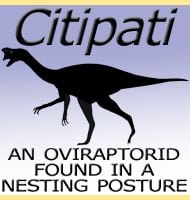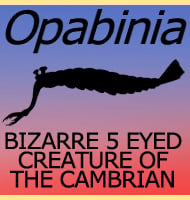In Depth
Serendipaceratops is often regarded as a dubious dinosaur genus, but if it is not, then it is actually the first ceratopsian dinosaur to be discovered as living in Australia. The story begins in 1993 when during the Dinosaur Cove Project, an isolated almost complete ulna bone (the same as one of the ones that you have in your lower arm) was found. Initially the bone was thought to belong to a theropod dinosaur, but when a palaeontologist visiting from Canada named Dale Russel saw the bone he remarked at how similar it was to North American ceratopsian dinosaurs such as Leptoceratops. In 2003, the bone was finally used as the basis of a new genus named Serendipaceratops. The species name arthurcclarkei is in honour of one of the greatest science fiction writers of all time, Arthur C. Clarke.
The main reason why Serendipaceratops is often treated as a dubious genus is because of the very fact that it is only known from a single bone. This makes it very hard to be certain about attributing further fossils to Serendipaceratops, especially if they don’t come with an exactly identical ulna as the holotype. This is in part due to the harsh climate of Australia which can quickly destroy exposed fossils through erosion, and many prehistoric animals from Australia are known only from incomplete, often single bones (Ozraptor being an example). A study in 2008 (Agnolin et al) also cast some doubt upon the validity of the Serendipaceratops ulna being ceratopsian as its features can be seen in other ornithischian dinosaurs, and belong to something else such as the ankylosaur Minmi.
A later study in 2014 (Rich et al) however re-assessed the ulna, and found that while it does feature some generic ornithischian qualities, it is still enough like other known ceratopsian dinosaurs to confirm it as ceratopsian and nothing else. What this means is that aside from being the first Australian ceratopsian dinosaur, it is the second ceratopsian genus known to have lived in the southern portion of the Mesozoic landmasses that was called Gondwana (the first was Notoceratops from South America, though at the time of writing there are still some questions about this being a true ceratopsian dinosaur).
The question remains as to how a ceratopsian dinosaur came to live in Australia when this type of dinosaur is thought to have originated either somewhere in Asia or North America. First it must be remembered that during the Mesozoic Australia much closer to the other continents than what it is today, and even though by the late Jurassic when dinosaurs similar to Serendipaceratops began to appear Australia was already splitting away, it is not impossible that early ancestors to Serendipaceratops might have been able to Island hop to Australia during periodic changes in sea levels that may have revealed temporary (lasting a few hundred/thousand years at a time) land bridges paving a way. It should also be remembered that other types of dinosaurs such as ankylosaurs and possibly even spinosaurs all made their way to Australia even though these types of dinosaurs did not appear in other parts of the world until after Australia is thought to have split away from the rest of the world.
Serendipaceratops would have been a small ceratopsian dinosaur, and of the kind of ceratopsian that would lack the elaborate horn and frill displays of the larger ceratopsians that lived towards the end of the Cretaceous. Possible predatory threats to Serendipaceratops would include theropod dinosaurs similar to genera like Australovenator which would have been roaming around Australia at about the same approximate time as Serendipaceratops.
Further Reading
- Protoceratopsian? ulnae from Australia. - Records of the Queen Victoria Museum Launceston 113:1-12. - T. Rich & P. Vickers-Rich - 2003. - A reappraisal of the Cretaceous non-avian dinosaur faunas from Australia and New Zealand: Evidence for their Gondwanan affinities. - Journal of Systematic Palaeontology, 8(2): 257-300 - F. L. Agnolin, M. D. Ezcurra, D. F. Pais & S. W. Salisbury. - Serendipaceratops arthurcclarkei Rich & Vickers-Rich, 2003 is an Australian Early Cretaceous ceratopsian. - Alcheringa. - Thomas H. Rich, Benjamin P. Kear, Robert Sinclair, Brenda Chinnery, Kenneth Carpenter, Mary L. McHugh & Patricia Vickers-Rich - 2014.










